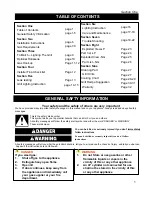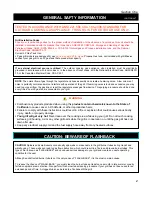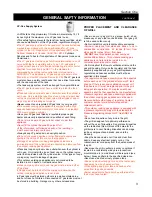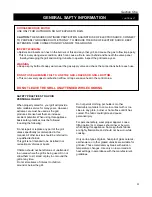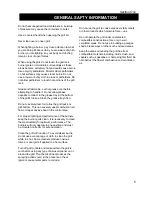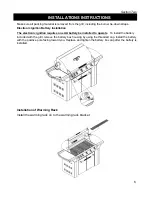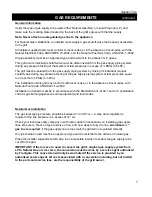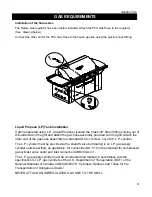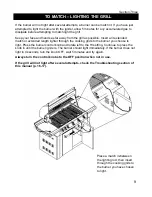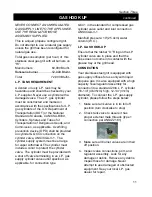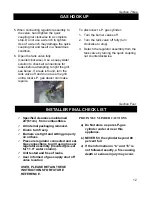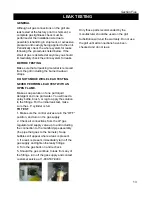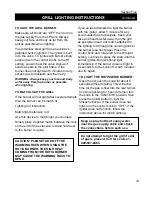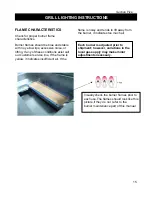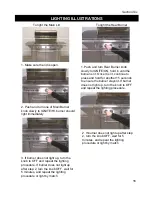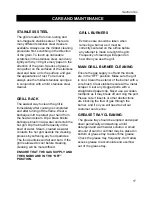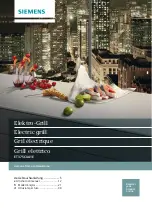
GENERAL SAFTY INFORMATION
continued
WARNING
Combustion byproducts produced when using this
product contain chemicals known to the State of
California
to cause cancer, birth defects, or other reproductive harm.
Failure to comply with these instructions could result in a fire or explosion that could cause serious bodily
injury, death, or property damage.
Your grill will get very hot.
Never lean over the cooking area while using your grill. Do not touch cooking
surfaces, grill housing, Lid or any other grill parts while the grill is in operation, or until the gas grill has cool
down after use.
Keep any electrical supply cord and the fuel supply hose away from any heated surfaces.
TESTED IN ACCORDANCE WITH ANSI Z21.58b CSA 1.6b-2006 STANDARD FOR
OUTDOOR COOKING GAS APPLIANCE. THIS GRIL IS FOR OUTDOOR USE ONLY.
Grill Installation Codes
Check your local building codes for the proper method of installation. In the absence of local codes, this unit should be
installed in accordance with the National Fuel Gas Code, ANSI Z223.1/NFPA 54, Storage and Handling of Liquefied
Petroleum Gases, ANSI / NFPA B149.2 or CSA B149.1Natural gas and Propane installation code, and the National
Electrical Code, ANSI/NFPA 70.
Correct LP Gas Tank Use
LP gas grill models are designed for use
with a standard 20 lb. Liquid
Propane Gas tank, not included with grill.
Never
connect your gas grill to an LP gas tank that exceeds this capacity.
If an external electrical source is utilized
: The outdoor cooking gas appliance, when installed, must be electrically
grounded in accordance with local codes or, in the absence of local codes, with the National Electrical Code, ANSI/NFPA
70, or the Canadian Electrical Code, CSA C22.1.
NOTE
: The normal flow of gas through the regulator and hose assembly can create a humming noise. A low volume of
noise is perfectly normal and will not interfere with operation of the grill. If humming noise is loud and excessive you may
need to purge air from the gas line or reset the regulator excess gas flow device. This purging procedure should be done
every time a new LP gas tank is connected to your grill.
CAUTION: BEWARE OF FLASHBACK
CAUTION:
Spiders and small insects occasionally spin webs or make nests in the grill burner tubes during transit and
warehousing. These webs can lead to gas flow obstruction, which could result in a fire in and around burner tubes. This
type of fire is known as “FLASH-BACK” and can cause serious damage to your grill and create an unsafe operating
condition for the user.
Although an obstructed burner tube is not the only cause of “FLASH-BACK”, it is the most common cause.
To reduce the chance of “FLASH-BACK”, you must clean the burner tubes at least once a month in late summer or early
fall when spiders are most active. Also perform this burner tube cleaning procedure if your grill has not been used for an
extended period of time. A clogged tube can be lead to a fire beneath the grill.
2
Section One


